Table of contents
In contrast to the flesh of the mature coconut ( Cocos nucifera ), the young raw coconut flesh is very thin, much sweeter and still soft. Organic coconuts are a good choice to protect nature.
Use in the kitchen
The soft flesh of the young coconut can be easily scooped out and enjoyed raw due to its jelly-like consistency. Young coconut flesh is suitable for smoothies (often in combination with coconut water ), for making coconut milk and coconut cream , as an addition to fruit salads and chilled desserts such as ice cream. It can also be used as a base for making coconut yoghurt .
It also goes well in salty dishes. Salads, curries or soups benefit from its delicate taste.
In stores you often see a special type of coconut, the drinking coconut. Can you eat a drinking coconut? Yes, even the flesh of a drinking coconut is edible. It is the same species ( Cocos nucifera ) as all other coconuts. Drinking coconuts contain more coconut water, which is why this variety was selected and cultivated. There are different shapes (round, egg-shaped, oblong-oval) and colors (green, yellowish). The appearance of a young coconut can therefore be very different. We know young coconuts with a green, leathery outer skin. Depending on the degree of ripeness, the fleshy outer layer later changes into a fibrous, airy shell. A ripe coconut with the hairy outer layer (which is water-repellent and enables it to spread by sea) is actually the kernel or seed of the drupe without the fruit wall (leathery exocarp and fibrous mesocarp). The three points on the hard, woody inner shell (endocarp) are germination holes (or germination pores), whereby only one germ begins to grow at a time. The inactive germination holes harden and the softer hole is used to extract coconut water, even in ripe fruits.
Eating a fresh, young coconut raw is a pleasure that you can treat yourself to occasionally.
Making your own coconut meat
To remove the young coconut meat from a coconut yourself, you need a good, heavy and sturdy knife. On the upper part of the coconut, after you have removed the green and white shell, you will see three notches. One of the three notches is the germ hole - the easiest way into the coconut. Carefully drill a small hole with the knife. Alternatively, you can drill a hole with a corkscrew. To get to the delicious coconut water, you have to break through the hard shell and the tender coconut meat. Now you can drink the coconut water.
To get to the flesh, secure the coconut and carefully chop around the germination holes along the equator with a knife to create a lid. If that's too difficult, you can lay the coconut on the ground in the garden and use a hammer or machete to give it a strong blow to split it in two. You can also clamp the "nut" in a vice and turn it until it cracks. You can now scrape out the flesh with a spoon and eat it raw.
Vegan recipe for a raw strawberry coconut butter
Ingredients (3 servings): 1 young coconut, 15 strawberries , 1⁄2 teaspoonvanilla , 1 teaspoon lemon juice , 1 banana .
Preparation: Remove the flesh from the coconut as described above. Wash the strawberries and remove the green leaves. Peel the banana. Put all the ingredients in the blender, puree finely and enjoy straight away.
Vegan recipes with coconut meat (raw) can be found under the note: " Recipes that have the most of this ingredient ".
| Not only vegans or vegetarians should read this: Vegans often eat unhealthily. Avoidable nutritional mistakes . |
Purchasing - Storage
Young coconuts can only be bought in selected supermarkets, specialty shops, some Asian shops or online. They are only rarely found in the usual supermarket chains such as Coop , Migros , Denner , Volg , Spar , Aldi , Lidl , Rewe , Edeka , Hofer , Billa etc. and in organic supermarkets such as Denn's Biomarkt and Alnatura .
Sometimes the green shell of the young coconut is removed to save transport weight. The rest of the inner shell then appears beige and in Asian shops can be in the shape of a 'pagoda', a typical design in Asia. The most important thing is that the coconut still contains plenty of water when shaken and is not damaged. Unripe coconuts have very little flesh compared to ripe coconuts . It is 0.1 to 0.5 mm thick. 2
Coconuts are in season all year round because the conditions in the tropics are constant for their growth. 1
The availability of coconut meat varies depending on the size of the store, catchment area, etc. Our recorded food prices for the DA-CH countries can be found above under the ingredient image - and by clicking you can see their development at various suppliers.
Storage tips
After harvesting, a young coconut will last for around 5 weeks, closed and with the shell on. For a particularly refreshing treat, chill the coconut in the fridge. Coconuts are not climacteric, which means that they do not ripen. Once opened, you should use up the flesh quickly.
The water in the young coconut turns pink after opening. This is not a quality-reducing criterion, it is simply an enzymatic process. The polyphenol oxidase that takes place can be compared to the brown coloring of cut potatoes . 3
Ingredients - Nutritional values - Calories
The young coconut is lower in fat than the mature coconut and the flesh has 90 kcal/100g, which is significantly less calories than when mature (354 kcal/100g). The flesh of a mature coconut consists of 33 g/100g fat. The proportion of the young coconut is slightly lower, but still not insignificant at 6 g/100g fat (of which 4.5 g/100g is saturated). 9 g/100g carbohydrates and 2 g/100g protein are contained in the young coconut flesh. 4
Young coconuts contain a significant amount of potassium (410 mg/100g); comparable to pecans or bulgur . 100 g of coconut flesh provides 21% of the daily requirement. More potassium is contained in soy granules (1995 mg/100g) ordried bananas (1183 mg/100g). 4
Coconut meat has 32 mg/100g magnesium , and dried apricots have a similar amount. Good sources are almonds (270 mg/100g) or sunflower seeds (325 mg/100g). 4
The pulp also contains some vitamin C – 3.6 mg/100g. The content could be compared to that oflettuce (3.7 mg/100g). Much more can be obtained from blackcurrants (181 mg/100g) or yellow bell peppers (184 mg/100g). 4
It also contains some iron and sodium . 4
In our research, we were only able to find a few data on secondary plant substances in young coconut flesh. However, there is a study on a common mutation of the coconut called 'Makapuno'. Even after advanced ripening, only a jelly-like flesh forms inside this fruit; the coconut remains soft inside. This flesh is probably similar to the flesh of a young coconut. At least you get an idea of which substances, in addition to nutrients, have a bioactive effect on the body. The soft flesh of the coconuts examined in the study consisted largely of water and saturated fatty acids, more precisely medium-chain triglycerides. The researchers found flavonoids, phenols, alkaloids, tannins and were able to determine an antioxidant effect. 11
The complete ingredients of young coconut meat, the coverage of the daily requirement and comparison values with other ingredients can be found in our nutrient tables. In the article Nutrients explained you will get a detailed insight into the topic.
Health effects
Non-communicable diseases such as cancer, diabetes and cardiovascular disease are receiving increasing attention and have a high mortality rate. Dietary antioxidants may play an important role in the development of these diseases and potentially reduce the risk. Fruits and vegetables are generally good sources of natural antioxidants. Phenols are some of the most important phytochemicals that have positive bioactive properties, including antioxidants. The total phenol content of fresh 'Makapuno' (the coconut mutation described above) is on average 301.93 µg GAE/g FW of fresh coconut. 11 For comparison: in one study, apples examined had significantly more of these, at around 2000 µg GAE/g FW. 27 GAE describes a standard calibration for measuring total phenol content: GAE = gallic acid equivalent per g FW (fresh weight). 5,27
Researchers examined the total phenol content of coconut meat depending on the degree of ripeness: 62.8–100.1 µg GAE/g. These values are low compared to well-known top performers, such as pomegranate or red grape juice. Gallic acid, caffeic acid, salicylic acid and p-coumaric acid were also found in coconut meat. 5
It is not clear whether the total phenol content increases or decreases with the age of the coconuts. In the case of the 'Makapuno', the total phenol content is highest in the young stage and decreases with age. 11 Other studies have shown that the total phenol content and the antioxidant activity increase with the degree of ripeness. Up to about 190 days after pollination of the fruit, after which the content remains constant or decreases. 5
In addition, the fats of the Makapuno consisted of 80% saturated fats, more specifically medium-chain triglycerides (MTC). These fats can be converted into energy more quickly. It is suspected that MTCs can be used to treat metabolic disorders such as diabetes, obesity and heart disease. 11 These fats are used in concentrated form in nutrient solutions for seriously ill patients, as an energy source and in patients with insufficient fat absorption. However, medium-chain fatty acids are difficult to store. Side effects can be stomach pain and diarrhea. 12 The largest proportion of the fatty acids contained in coconuts are medium-chain lauric acid. MCTs show potential for use in functional foods. 5 They may be somewhat healthier than long-chain fatty acids, such as those found in animal products. 19 You can find out more about medium-chain fatty acids under the ingredient coconut oil .
In recent years, coconut oil has seemingly emerged as a potential "miracle food." Some media and health specialists claim that this fat is able to reduce body weight, lower cholesterol, help prevent cardiovascular disease, and has anti-inflammatory properties, to name a few. Coconut companies like to use these claims to market their products. However, government regulators in many countries are still skeptical because of the high saturated fat content. In a review study, researchers took a closer look at what we really know about the health effects of coconut oil. It was found that the metabolism of lauric acid (MCT), the most important fatty acid in coconuts, is still unclear. Despite being often touted, weight loss through coconut fat is doubtful, and many studies have found no effect. Consumption of coconut fat increases low-density lipoprotein cholesterol and thus increases the risk of cardiovascular disease. In general, studies show conflicting results and there is a lack of long-term clinical studies on humans. Therefore, coconut oil, as well as young coconut meat, is a saturated fat and should be consumed in moderation. The health benefits touted for marketing purposes are often not sufficiently scientifically substantiated. 13
Is it healthy to eat young, green, unripe coconuts? By definition, coconut products cannot be advertised as healthy. Neither on the basis of their fat composition nor on the basis of other ingredients. The US Food and Drug Administration ( FDA ) warned manufacturers against making misleading health claims, such as that coconut products are antiviral, lower cholesterol and/or can regulate blood sugar levels. There were also warnings about unfair competition. According to industry statistics, these health claims by the food industry increased sales of coconut blossom sugar (palm sugar), for example, by 320% between 2008 and 2012. 8 HuffPost ( The Huffington Post ) published five of the myths, two of them about coconut products. The saturated fats in coconuts are no healthier than other fats and should only make up around 5% of total calories consumed (13 g of 2000 kcal/day). 9 This also applies to other coconut foods: False claims that are copied without criticism can be found on the Internet and even among nutritionists. 6
For more information, see the ingredient coconut water .
Dangers - Intolerances - Side effects
Please note that coconut products, especially pure coconut oil (coconut fat), contain a high proportion of saturated fatty acids and thus the ratio of omega-6 fatty acids to omega-3 fatty acids (LA:ALA) is very unfavorable. For coconut oil, the ratio is 127:1, for palm oil (palm fat) 45:1 and for rapeseed oil 2:1. The closer the ratio approaches the ideal of 1:1, the better it is for your health. Regular consumption of coconut products increases the undesirable LDL cholesterol in the blood and promotes cardiovascular disease. A study clearly supports this in its conclusion: Significant determinants of high blood pressure were higher saturated fatty acids. The intake of saturated fat appears to be a risk factor for insulin resistance, which is important for the pathogenesis of diabetes and cardiovascular disease. 7
Examining individual ingredients in food is important for basic research in order to find bioactive molecules. However, these substances do not occur alone in food. Isolated substances can have a different effect than the same substance in food when combined with other ingredients. Therefore, nutritional recommendations that refer to one ingredient should be viewed with skepticism. They are misleading and often propagated by the food industry. 20
Ecological footprint - animal welfare
The global average water footprint of coconuts is 2687 litres/kg. 14 These figures vary greatly depending on the specific growing conditions, the geographical location of the plantations and the production methods.
A study in Brazil, a major producer of 'green coconuts', examined the water and CO 2 footprint of 'green coconuts'. In an examination of the ecological footprint of six conventional and one organic farm, it varied between 0.12 kg CO 2 eq/kg and 0.36 kg CO 2 eq/kg. 21 For comparison, the avocado (in Germany) has an average CO 2 footprint of 0.6 kg CO 2 eq/kg, and coconut oil 2.3 kg CO 2 eq/kg. 22
It is widely known how bad palm oil can be for the environment, but the fact that coconuts, like oil palms, are often grown in plantations on former rainforest is hardly covered in the media. 18 Compared to the oil palm, one might think that the coconut is an ecologically better alternative. But the cultivation of coconuts also faces the same problems: deforestation and loss of biodiversity. The high demand for coconut products also promotes monocultures. 15
As early as 1996, warnings were issued that, in addition to the burning of fossil fuels, deforestation of the rainforest is a major factor in increasing the CO 2 content in the atmosphere. 16
Land use change (e.g. rainforest to plantation) and cultivation practices (organic vs. conventional) are a central issue when it comes to reducing the ecological footprint of coconuts. Social aspects and animal welfare are also of great importance (more on this under coconut oil and coconut water ).
Over a quarter of global greenhouse gases are attributable to food production. 17 Many coconut farmers live below the poverty line. At the same time, rainforests are being cleared for cultivation, which leads to a loss of biodiversity. Certificates ensure social and environmental standards that benefit the world. 23 In addition to organic certification, there are other certification options for coconut farmers, so-called 'voluntary sustainability standards'. These are standards for meeting certain sustainability goals regarding human rights, income equality, health and safety, environmental protection, etc. (e.g. Fair Trade , Rainforest Alliance ). 24
Potentially, the coconut also offers many opportunities to improve the environment by increasing carbon sequestration and reducing carbon emissions. The coconut palm has good carbon storage because it is a perennial plant, and all parts of it can be used: coconut trunks, leaves and fruit. 24
Animal welfare - species protection
As the harvest is very arduous, trained monkeys are sometimes used. You can find out more about this under the ingredient coconut oil .
Worldwide occurrence - cultivation
Indonesia is the world's largest producer of coconuts, closely followed by the Philippines. India is number three in production. These three countries account for about 70% of the world's coconut production. Brazil, Sri Lanka and Vietnam follow in fourth, fifth and sixth place. 26
Cultivation - Harvest
Fresh, loose, nutrient-rich and deep soils are ideal for coconut palms. They thrive best on sandy loam soils on coasts and river mouths. Coconut palms are very sensitive to cold. They occasionally grow at 1600 m above sea level (inland Africa on Lake Kivu or in eastern Peru). 10 They thrive best at temperatures between 27° and 30° C, in a humid environment and require fresh groundwater, although they can tolerate salt water. Coconut palms grow between 23° north and 23° south of the equator. If the tree survives outside this limit, it will not produce fruit. 26
From the 6th or 7th year onwards, inflorescences grow from the coconut palms. Wind and insects pollinate the female flowers, which produce fruits in different stages of ripeness throughout the year. The fruits are not nuts, but stone fruits. Under ideal conditions, coconut palms can produce maximum yields for between 15 and 60 years. Around 30-40 ripe coconuts can be harvested from one palm per year, but there are also varieties with maximum yields of between 70 and 150 fruits per year. 1
Green, young coconuts are harvested after about 6 months, ripe, brown fruits after 12 months.
The use of macaques in harvesting is particularly well-known in Thailand. A trained monkey can harvest 1,600 coconuts a day, while a human can only manage 80. 26 Animal welfare is often neglected. The use of monkeys as harvest workers can be traced back to 2500 BC. 25, 26
Further information
The coconut palm ( Cocos nucifera ) is a tropical palm and the only species of the genus Cocos . However, there are many different varieties. Two important varieties are 'dwarf' and 'tall' coconut palms. 26
The coconut is extremely important for the lives of many people. Around 17 billion coconuts are harvested worldwide. More than 80 million people earn their living from growing and processing coconuts; in the Philippines, the figure is around 25 million people. Sri Lanka has even had its own minister for coconuts since 1976. 26
Alternative names
In English, the flesh of the young coconut is called 'young coconut flesh/meat', 'young coconut jelly', 'coco jelly' or 'green coconut meat'.
In German-speaking countries, 'young coconut flesh' is also called 'flesh of the young coconut' or 'coconut jelly'.
Other uses
The coconut palm is very versatile. In addition to the wood, the fibers of the coconuts are also used as a raw material for building. These are used to weave house walls, baskets, mats and ropes. The dry coconut shells are often used as fuel.

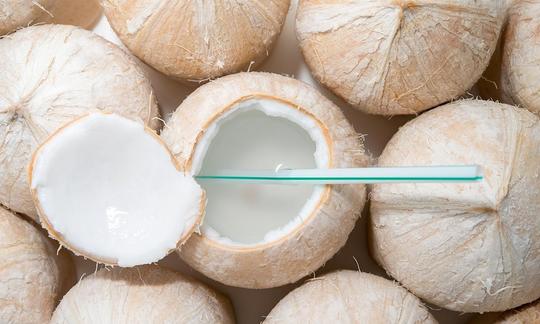

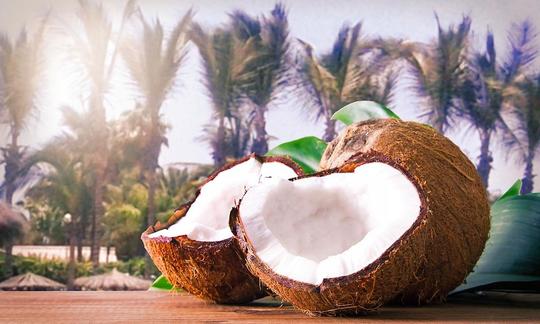

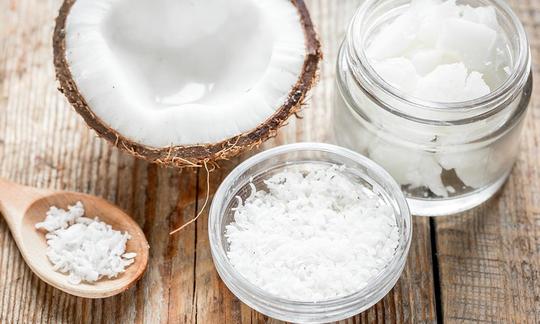

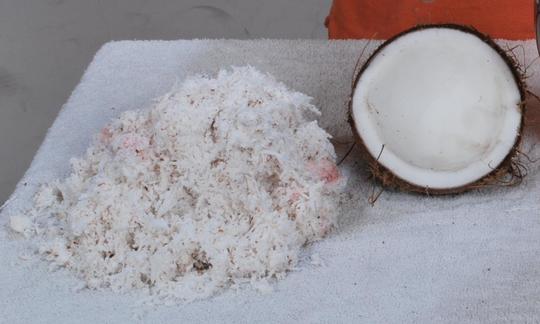

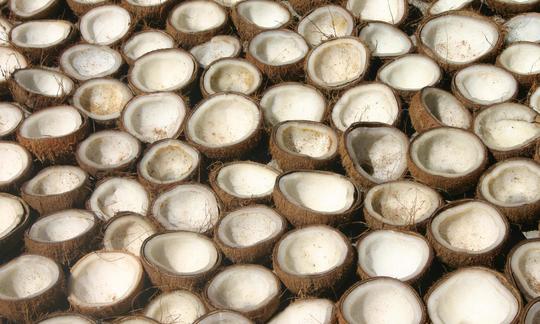

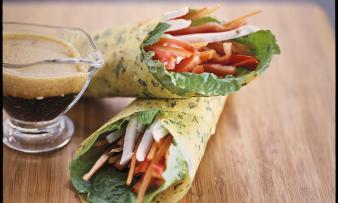
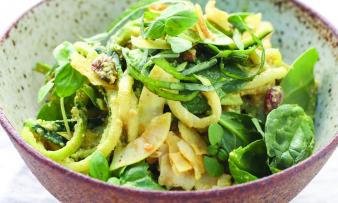

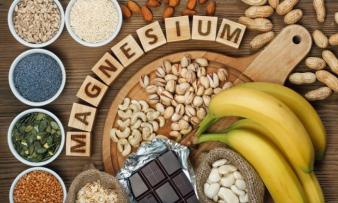
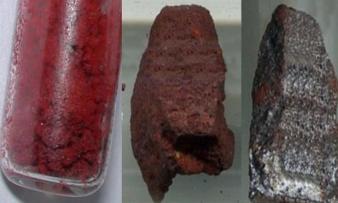


Comments